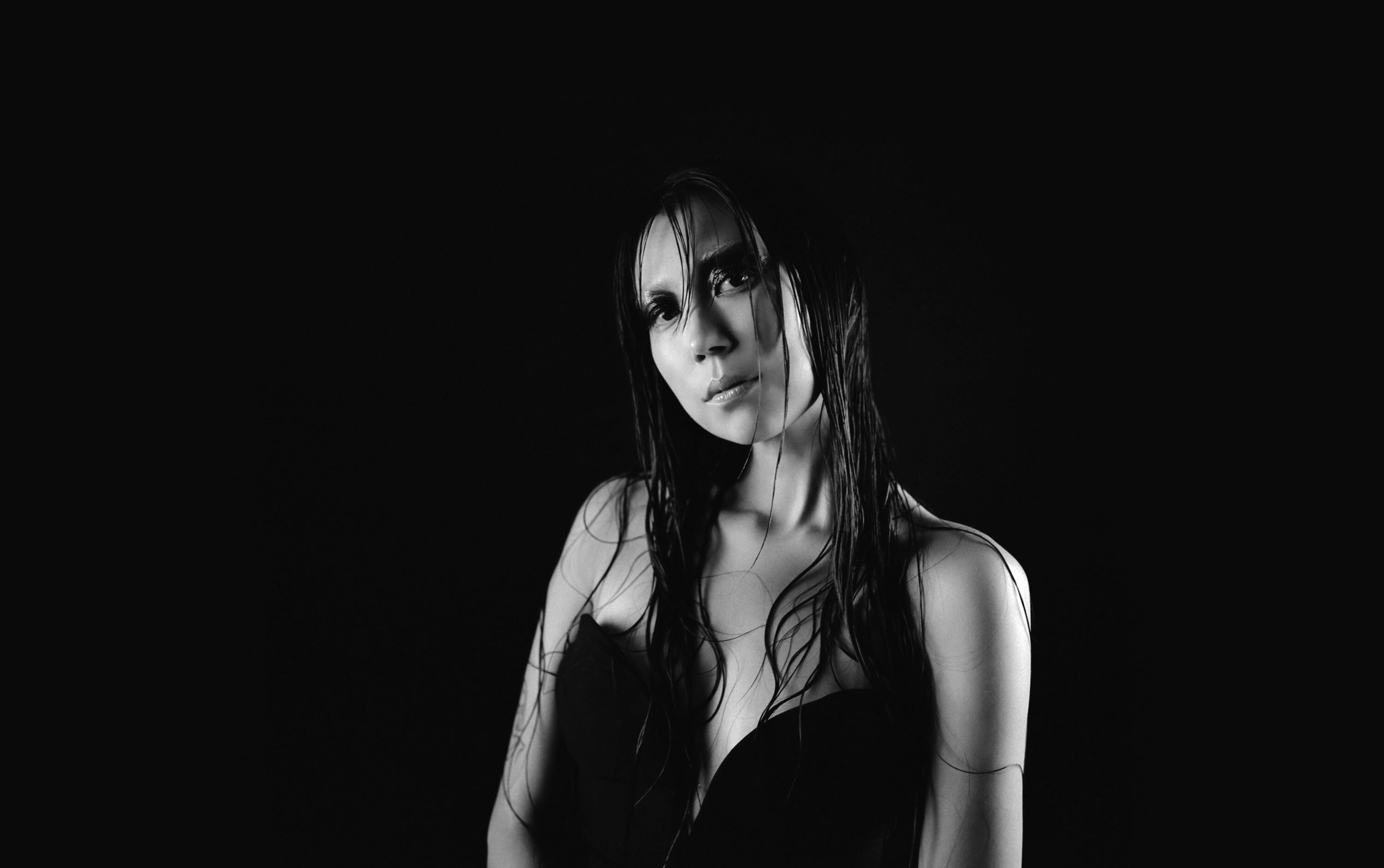Sasami Ashworth released her self-titled debut album as SASAMI in 2019, but it wasn’t made for anyone to hear. “I needed to do it as a point of relief, almost like a diary,” the LA-based musician tells me. “I never intended for so many people to listen to it, I was making it for myself. Like a production and songwriting exercise, without any intent of creating a certain experience for the listener.” SASAMI feels like she smoothed out the crumpled pages of her journal and set them against scribbled shoegaze and sullen dream pop. Her immediate sincerity on that record is endearing, and her compositions are labyrinthine swells that hint at defiance. “There’s nothing wrong with a half-finished song,” she sings quietly as electric guitars tense and tease combustion during “Free,” shortly after refuting apologies amidst winding guitars on “Morning Comes.” Despite our access to finespun moments, there were small hints that Ashworth was holding back.
In retrospect, SASAMI was an unforgettable debut that was merely a warm-up. Her focus for her next and latest album, Squeeze, was to depart from the autobiographical and lean into something heavier. “Squeeze is me creating something specifically to elicit or create an environment for an emotional experience for the listener,” she reveals. “It’s created from a completely different intention. And it's really the first album I've ever made with the intention of other people hearing it.”
Squeeze finds SASAMI’s songwriting world ever more masterful and expansive. She describes studio time during the pandemic as trance-like and similar to being “in a woodshop chipping away at wood all day.” Eager ears awaited what would come next, and it might come as a surprise for those expecting her to stay in the same mild-mannered region as her debut. “I'm a composer—I use sound that fits a scene in the same way a filmmaker needs a certain type of cinematography to make the scene believable,” she explains. “All the different genres and different types of music are like languages that you become however fluent you want to be in them. You pick up certain words and phrases from these different languages and decide which parts you want to sew together to make your own individual language that you speak when you make your music.”
“I’m a composer—I use sound that fits a scene in the same way a filmmaker needs a certain type of cinematography to make the scene believable.”
Contrasting with her relatively low-key debut, Squeeze bounces between hellish dance-punk, skittery heavy metal, cinematic new wave, and sophisticated indie rock. There are elegant symphonic compositions that nod to her classical training, but most excitingly, there are robust and dark whirlpools of heavy metal that drag us into the fiery pits of Satan's living room. “I wanted to take it all the way, and, to me, using metal sounds felt like a really extreme choice,” she says, explaining the tonal shift. “I didn't want to do something that was half-assed or timid. I wanted to just go all the way. I find the sound of metal instruments to be very hellish and demonic and angry, which I wanted to tap into those themes on this album.”
Inspired by ’90s metal, SASAMI repurposed sounds that have been paired or associated with misogynistic ideas, hetonormative cis-male frontleaders, and white-nationalist ideologies in order to let loose a rage that ties to her own heritage. Squeeze’s avatar is the Nure-onna, a Japanese yōkai (or “strange apparition”) that has a woman’s head and a snake’s body. She entices sailors and lures them to their death, but there isn’t a clear motive for why or when she chooses to kill. Ashworth came across the myth while studying her family ancestry and the history of Zainichi Koreans—those who lived in Japan during its occupation of Korea who were victims of systemic oppression.

Not only is her inspiration apparent on Andrew Thomas Huang and Rin Kim’s design for the album cover, which depicts SASAMI as a Nure-onna with eight crab-like legs, but also in the album’s balance between seduction and doom. Even the record’s title has an ambiguity signature to SASAMI’s work. “Squeeze is like a Rorschach test. It could mean an endearing hug, or it could be violently squeezing for one last drop. I feel like it has the variety of meaning that the album kind of has,” she adds.
“I didn’t want to do something that was half-assed or timid. I wanted to just go all the way. I find the sound of metal instruments to be very hellish and demonic and angry, which I wanted to tap into those themes on this album.”
During the conversation, Ashworth mentions the existential headspace she was in at the onset of the pandemic when it felt like a battle between confronting reality and escaping from it. How would that impact her art, and which lane would she land in? “A lot of times I grapple with making an album during a time where our country is protesting and going through a lot of collective reckoning and social critique—it definitely creates an environment that isn't really appropriate to be in a fantasy space, and it really isn't appropriate to be in a place of self absorption,” she says. “That made it really difficult—and appropriately so—for a lot of artists to make art in the pandemic. But I also think that life has to be a well-rounded mix of education and empathy and work and personal relationships, and you have to kind of balance all these things as best you can.”
The journey from SASAMI to Squeeze brings in larger questions of who an artist makes art for, and whether or not that intent gets lost in the world of casual, constant publishing. What performances are meant for others, and what performances are meant for ourselves? Regardless, art provokes empathy and serves as an outlet for a constant need to connect. “The interesting thing about art is that humans project what we feel or want to feel or need to feel on everything,” Ashworth says. “Art is, in some ways, a mirror or something. It's like in Harry Potter, the mirror that shows you what you want to see.”
The suggestion of fantasy on Squeeze doesn’t equate to escapism in order to avoid reality. Rather, the metal and mythological elements act as a space for real-world frustration and pain that might feel pointless or too massive to direct at one singular problem in our unjust, unequal, pandemic-ridden world. There’s anger, provocation, and lapses in communication, and SASAMI dives headfirst into them through theatrics. “I think that it’s really important for artists to not think that they're above their humanity and citizenship as people. And it's very important for artists to be connected and grounded. But at the same time, part of the work is to be suspended from reality and tap into a place of fantasy and a place of imagination and creativity.” FL







